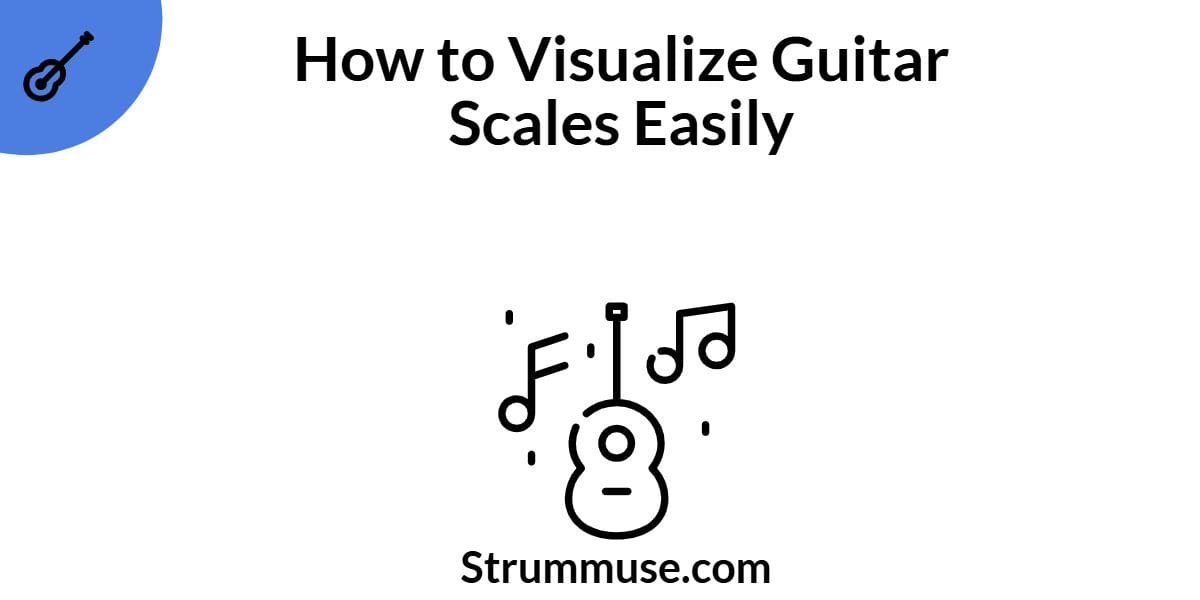Table of Contents
Why Visualizing Scales Matters
Learning to visualize scales on the guitar helps you:
- Understand the fretboard better
- Improvise more musically
- Compose solos and melodies
- Move freely across the neck
Whether you’re a beginner or intermediate guitarist, scale visualization unlocks new creative possibilities.
1. Start with Scale Patterns (Box Shapes)
The most beginner-friendly way to understand scales is to learn box patterns. One popular method is the CAGED system, which breaks the fretboard into 5 positions for major and minor scales.
Example: C Major Scale Box (8th Fret)
e|----------------7-8-|
B|------------8-10----|
G|------7-9-10--------|
D|--7-10--------------|
A|--8-10--------------|
E|--7-8---------------|
Memorize one pattern at a time, then connect them horizontally on the neck.
2. Use Fretboard Diagrams
Visual learners benefit from fretboard maps showing the notes of a scale all over the guitar neck. These diagrams help you:
- See repeating patterns
- Recognize root notes
- Understand interval relationships
👉 Download Your Free Guitar Scale Chart PDF Below!
Click here to download the printable scale chart PDF
This PDF includes:
- Major and minor scale patterns
- Pentatonic scales
- CAGED positions
- Blank fretboard templates
3. Color Code the Degrees of the Scale
Use different colors or numbers for each degree of the scale:
- 1 (Root) = Red
- 3 (Major Third) = Blue
- 5 (Perfect Fifth) = Green
This makes it easier to memorize and navigate.
4. Connect Scale Shapes Across the Neck
Instead of staying in one position, practice moving through multiple boxes:
- Slide from position to position
- Play scales diagonally across strings
- Use techniques like slides and hammer-ons to link shapes naturally
5. Practice with a Backing Track
Use a backing track in a key (like A Major or C Minor) to:
- Improvise melodies
- Emphasize the root note
- Practice phrasing and feel
🔗 Search “C Major Backing Track” on YouTube
6. Root Note Anchoring
Learn to find the root note of a scale on every string. For example, find all the G notes on the neck and build a G Major scale from there. This develops fretboard awareness.
Recommended Tools
- Websites: fretboardguitar.com, guitar-chords.org.uk, Strummuse
- Apps: Fretboard Hero, Justin Guitar, Yousician
- Books: Guitar Fretboard Workbook by Barrett Tagliarino, Fretboard Logic
FAQs
Q: What’s the best way to memorize scales?
A: Start with one scale like C major, visualize Guitar Scales patterns, and practice daily with a metronome.
Q: Should I learn scales before chords?
A: Learning both together helps. Scales explain melodies; chords build harmony.
Q: How many major/minor scales are there?
A: 12 major and 12 relative minor scales — one for each key.
Conclusion
Visualizing scales isn’t about memorizing a million patterns — it’s about seeing the big picture on the fretboard. With consistent practice and tools like diagrams, PDFs, and color coding, you’ll soon play fluidly across the entire neck.
🎁 Don’t forget to download your free printable PDF scale chart to get started!

